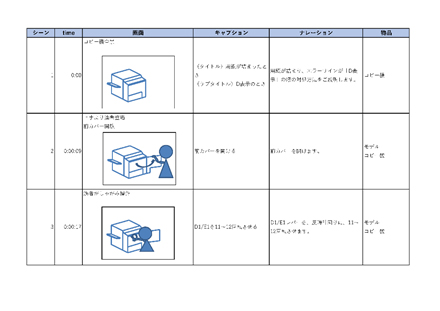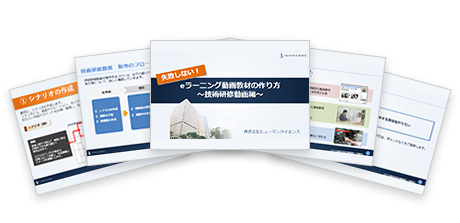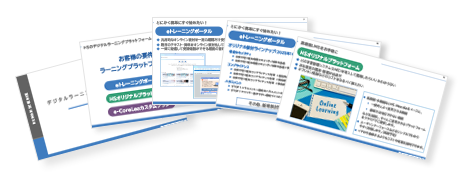2020.10.26
Common Issues in Creating Video Materials for Technical Training
Skills necessary for construction, such as technical abilities, are typically developed and refined through practical training, on-the-job training (OJT), and experience on-site. For seasoned professionals who have acquired sufficient skills, their presence is indispensable not only on actual job sites but also in mentoring successors.
I have heard from a certain client that, regarding these skills, having adequate knowledge does not necessarily mean one can perform the tasks effectively. This suggests that technical skills are literally something that must be "acquired".
On the other hand, due to the recent labor shortage and the fact that the veteran workforce that has supported companies is simultaneously reaching or has reached retirement age, many companies see the inheritance of technology as an urgent issue.
Therefore, here we will explain the key points for recording practical technical training that has been conducted in group training sessions so far, to assist in the inheritance of skills.

Table of Contents
Common Issues in Creating Video Training Materials
- Knowledge is personalized and not documented
- There is a possibility that engineers are not working in an exemplary manner
- High specialization makes generalization and simplification difficult
Measures for Problem Solving
- Extract necessary information
- Organize and restructure information
- Capture without omissions and edit appropriately
Common Issues in Creating Video Materials for Technical Training
Based on our development experience so far and the concerns we have heard from our clients, the following are the main barriers that hinder the creation of educational materials.
- ・Know-how is personalized and not compiled into documents
- ・There may be instances where the engineers are not working in an exemplary manner
- ・Highly specialized, difficult to generalize or simplify
Let's take a look at each one.
Knowledge is personalized and not compiled into documents
The know-how of veteran engineers is cultivated through years of experience, and it seems that there are rarely systematic textbooks or explanatory materials available. However, to create educational materials, it is necessary to extract and compile the knowledge and skills that exist solely among engineers and to prepare them as teaching materials.
There is a possibility that engineers are not working in an exemplary manner
Because they are veteran engineers, there is a possibility that their actions may not be entirely faithful to the basics due to years of familiarity. It is precisely because they are veterans that they can sometimes achieve good results even with some shortcuts.
However, in the video, the veteran engineer must serve as the subject and demonstrate exemplary and basic-compliant work. Therefore, if it is not possible to thoroughly check whether those actions are truly correct, there is a concern that the material may be inadequate as a teaching resource.
Highly specialized, difficult to generalize and simplify
In construction, many technical terms, various tools, and materials are used. Additionally, the behavior of workers can be complex and difficult to understand. It is essential to convey these as accurately as possible to the viewers of the video.
In a group training session, it is possible to ask questions at any time, bring the focus closer to the actions, or view from different angles. However, in the case of a video, if care is not taken during filming or editing, it may end up being difficult for viewers to understand.

Measures for Problem Solving
The three "common issues" mentioned earlier all highlight the "gap" between the advanced expertise of veteran engineers and the level of understanding of learners.
The key to resolution lies in who will bridge that gap and how to overcome it.
It would be ideal if veteran engineers, who are also sources of information for teaching materials, could be responsible for planning and creating scenarios for the materials. However, this proposal cannot be considered realistic. Veteran engineers are neither experts in teaching materials nor experts in lectures. Additionally, if the burden associated with material development increases, it could potentially interfere with their primary duties.
Many companies seem to be struggling with this part, which is hindering the development of educational materials.
The measures necessary to complete the "videos that can be used as teaching materials" while solving this issue are as follows.
- ・Extract necessary information
- ・Organize and restructure information
- ・Capture thoroughly and edit appropriately
I will explain in order.
Extracting Necessary Information
The necessary information lies within the veteran engineers who are the subjects. To incorporate it into the teaching materials, it needs to be extracted.
There are two points of action that can be taken here.
- ・Conduct a rehearsal of the work
- ・Conduct detailed interviews with engineers
Rehearsals are effective for confirming procedures by engineers and for checking the arrangements for filming.
By confirming in advance what actions will be taken and where, you can prepare tools and materials without excess or shortage, and identify camera angles.
Filming without a rehearsal can lead to poor arrangements and a higher number of NG takes.
The items to be discussed with the engineers are as follows.
- ・Purpose and Goals of the Work
- ・Work Procedures
- ・Preparation (Tools, Materials, Equipment)
- ・Points of work and precautions
We conduct a hearing in advance before the rehearsal, and during the rehearsal, we confirm any questions or uncertainties on the spot.
After the rehearsal, we organize the work procedures and the final image in the form of a "scenario," gathering the necessary information through the hearing to create the scenario.
We will record the usage of tools and safety points without omission, and reflect them during the subsequent video editing.
There are various advantages to maintaining close communication with engineers.
You can extract important information that may be too obvious for engineers to readily recall, which can serve as key points for the materials.
Information that exists only in the minds of engineers can be articulated through conversations. In that process, you may notice points that were overlooked or realize when something deviates from the basics.
Organize and restructure information
We classify and organize the information obtained from rehearsals and hearings to create a scenario. The scenario is not just created here; it will be refined throughout the entire process until the video is completed.
The scenario will include the following content. At the pre-shooting stage, everything can be provisional and assumed.
- ・Image: What kind of screen to create (storyboard)
- ・Caption (Notes, Terms, Additional Explanations)
- ・Narration)
A caption is a description or name displayed on the screen.
Creating it while considering which information to sort and where helps to notice any lack of information or contradictions. Any unclear points raised at this stage, supplementary information, and responses to corrections should be addressed in advance if possible, or during the shooting if time is limited.

Scenario (Example)
Capture without missing anything and edit appropriately
Finally, it's time for the shoot. Here are the necessary staff and their roles for the shoot. If you have a wealth of staff, the shoot will progress relatively smoothly, but it is advisable to adjust based on budget and individual schedules.
Additionally, it is not uncommon for one person to take on multiple roles, such as a director also serving as a cameraman, or a camera assistant also acting as an assistant director.
| Name | Role | Necessity |
|---|---|---|
| Director | Overall responsible for filming. Reviews the scenario while checking the filming content, including camera angles, and makes judgments on the quality of the video, determining OK/NG. | Required |
| Photographer | Conduct a shoot. The number of people required is equal to the number of cameras. | Required |
| Camera Assistant | When shooting with camera movement, cable routing and other tasks will be performed. We also handle miscellaneous tasks such as lens and battery replacement. | |
| Voice | Necessary for recording audio (narration and interview audio) on the spot. Conduct volume and sound quality checks, and manage the microphone. | Required at the time of recording |
| Lighting | Responsible for managing lighting technology and lighting equipment | |
| Assistant Director | Undertaking general tasks related to photography |
We will conduct the filming according to the scenario. During this process, we will check whether the actions are truly exemplary and faithful to the basics, and whether they align with the information gathered during the hearing.
We will also conduct hearings as needed during filming, confirming any observations on the spot and ensuring that there are no omissions in the filming.
Additionally, if we find that the actions are complex or of high difficulty, we will film from different angles multiple times or capture separate actions to show details, ensuring that no necessary scenes are missed.
After filming, we will reorganize the script.
We will create a storyboard that reflects the information collected during filming and envisions the final form of the video materials. We will also devise captions (explanatory text or names displayed on the screen) and narration. The script will be shared with engineers to verify the accuracy of expressions, including wording, and to supplement any missing information.
After filming, we will edit the video. Based on the script, we will proceed with rough editing, checking, and recording the narration to complete the video.
We will also share the edited video with engineers to ensure that the content is correct as we proceed.
> e-Learning Content Production
Author:
Shizuko Sase
Education Solutions Department Production Group Writer
After joining Human Science, worked as a technical writer,
gaining experience in the design and writing of product manuals and business manuals.
Subsequently engaged in writing and production direction of e-learning materials.
Involved in the production of approximately 200 educational materials so far.
Contact Information:
Phone Number: 03-5321-3111
hsweb_inquiry@science.co.jp
No Failures! How to Create e-Learning Video Materials
~Technical Training Video Edition~
This section explains the features and creation methods of technical training videos in e-learning video materials, as well as key points. It also includes common points related to video production.

[Content]
Technical Training Video Production Flow
1. Preparation (① Script Creation, ② Arranging Filming, ③ Creating Shooting Schedule)
2. Filming Day (① Pre-filming Preparation, ② Tasks During Filming)
3. Editing Work (① Editing, ② Encoding)













